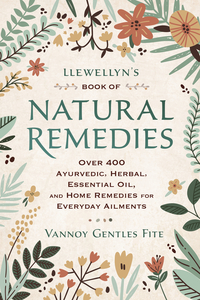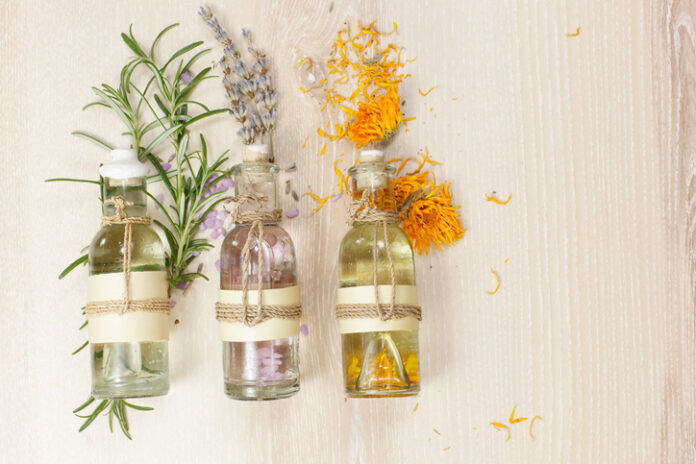Ayurvedic which means, “the science of life,” is an ancient form of healing that is widely used today in various countries all over the Earth. In western medicine, you would typically go into a doctor’s office, maybe spend 15 minutes with the doctor outlining your illness, and he/she would write you a prescription for medication. This has been our pattern of healing for over a hundred years. By contrast, with Ayurveda, you would go into your Ayurvedic practitioner’s office, talk and answer questions for 1-2 hours about every aspect of your life, and he/she would prescribe for you many different treatments. You may be asked to bathe a certain way, do particular exercises, eat a type of diet, drink certain herbal teas, meditate a particular way, say some mantras, use a particular massage oil, sleep and rise at a certain time, say unique affirmations, and surround yourself with particular colors or crystals.
All of these practices that you would do for your Ayurvedic healing typically have one goal or outcome besides healing you, and that is to balance your doshas—these are a personality type. There are three main doshas in Ayurveda: vata, pitta, and kapha. You can have a combination of doshas, or have the personality and health type of one main dosha. The aim of Ayurveda is to balance the doshas for good health. Having your doshas out of balance usually means that there is one dosha type that is prevalent in you. Reducing that main dosha can heal you in a multitude of ways.
There are certain illnesses that are attributed to the three doshas. If you have an abundance of vata, then you will be prone to arthritis, back pain, sciatica, dry skin, arm atrophy, anxiety, panic attacks, nerve issues, digestive problems, and painful illnesses as you age.
Those with an abundance of kapha typically experience obesity, diabetes, allergies, depression, lethargy, congestion, indigestion, heart issues, timidity, and mucus/sinus issues.
The illness associated with an abundance of pitta illnesses include gastrointestinal illnesses, skin issues, sweating, high blood pressure, shoulder/neck pain, and strokes.
Getting your dosha under control and balanced is a life-long project, but can keep you from getting diseases you would get if you simply let your doshas continue out of balance as they have been. Learning which dosha you primarily are is easy. There are characteristics associated with each dosha, both physical and mental.
Characteristics associated with vata: Quick speech, thin body types, dry skin and hair, fast walking pace, anxiety, fearfulness, prone to cold, gassy, and brittle nails.
Characteristics associated with kapha: A heavy body type, lethargy, slowness, excess mucus, thin and oily hair, and foggy thinking.
Characteristics associated with pitta: An average body type, focus, skilled speech, cheerfulness, quick temper, good memory, blond/red hair, prone to being hot.
Do you spot yourself among the doshas? It can be somewhat frightening to discover which dosha is your primary dosha, then to realize what diseases lie in your future if you don’t get your doshas balanced. Balancing the doshas is a constant, everyday job. But, fortunately, most of the time it is enjoyable. Below I will address each of the primary doshas and what you can do to bring that particular dosha down, and to bring the other two doshas up, thereby bringing your doshas into balance. Try a couple of dosha balancing techniques each day and see if you don’t feel better physically and mentally.
Vata
Eat: Nuts, seeds, stews, soups, squash, oats, rice, wheat, sour cream, yogurt, almonds, honey, maple syrup, ghee, sesame oil, avocado, carrots, onion, okra, tomatoes, bananas, blackberries, coconut, grapefruit, oranges, pears, peaches, nectarines, water, chamomile tea, fish, chicken, turkey, pork, seafood.
Do Not Eat: Cold drinks, salads, broccoli, cauliflower, chocolate, dried fruit, cranberries, asparagus, brussels sprouts, cabbage, raw vegetables, beef, legumes.
Exercise: It is important for vatas (which are very airy) to be grounded. Any exercise a vata can do that is outdoors in nature is so good. Standing with your bare feet on the Earth can ground a vata quicker than anything. Yoga poses are great for grounding vatas, including corpse pose, downward facing dog, child’s pose, sitting poses, stretching poses, and balancing poses.
Gemstones: Vatas should primarily surround themselves with ruby, onyx, emerald, aquamarine, garnet, or topaz.
Colors: Warm, grounding, earthy colors such as yellows, greens, browns, and oranges.
Kapha
Eat: Apples, cherries, peaches, plums, raisins, cabbage, cauliflower, carrots, onions, mushrooms, radishes, spinach, Brussels sprouts, corn, basmati rice, eggs, chicken, turkey, honey, corn oil, lentils, beans, broccoli, and lettuce.
Do Not Eat: Heavy grounding foods, such as soups, stews, heavy meats, cheese, most nuts, mayonnaise, oats, and ice cream.
Exercise: It is important for kaphas to move. Kaphas are very sedentary. Take a hike, ride a bicycle, do aerobics, go swimming—any exercise that can get the arms and legs moving. Yoga poses include warrior, twisting poses, balancing poses, and sun salutations.
Gemstones: Kaphas should surround themselves with rubies, garnet, blue sapphire, carnelian, and cat’s eye.
Colors: Kaphas need stimulating colors such as red, purple, scarlet, coral, and pink.
Pitta
Eat: Leafy greens, potatoes, fish, dairy, nuts and seeds, coconut, lime, dried beans, peppermint, avocados, melons, pomegranates, mangos, asparagus, cabbage, cucumber, zucchini, basmati and white rice, eggs, legumes, honey, ghee, milk, coconut and olive oil, rhubarb, and quinoa.
Do Not Eat: Salty or spicy foods, raw onion, mustard, peppers, cheese, tomatoes, yogurt, fried foods, oranges, pineapples, grapefruits, lemons, and coffee.
Exercise: Cycling, fast walking, hiking, yoga exercises such as cat/cow, standing and balancing poses, tai chi, stretching, and gentle exercise.
Gemstones: Pittas should surround themselves with diamonds, aquamarine, emeralds, pearls, and blue sapphire.
Colors: Pitta’s need pastel colors, such as blues, whites, light pinks, and soft yellows.
These are just a few of the ways that you can balance your doshas. Ayurveda teaches us that the number one way to live a long, healthy, and happy life, one free of illness and disease, is to work on balancing your doshas every day. Some of the more intense ways to balance your dosha including incorporating a yoga routine, a detox, and a strict diet each day that specifically targets your dosha. You can include other types of exercise as well. Research which exercise, food, and practices are good for you.
There are different types of meditation that have been proven to balance the doshas, including guided meditation, silent meditation, chanting meditation, and walking meditation. You can find the type of meditation that works best with your dosha and incorporate it into your life. Meditation is beneficial on so many aspects of your life.
There are mantras, chants, affirmations, foods, types of journaling, spirituality, mental awareness practices, detoxifying, spices, reading materials, herbs, essential oils, and so many other things you can do daily to balance your doshas. A great book that helps to guide you and give you tips and hints about your doshas is Llewellyn’s Book of Natural Remedies; in writing this book, I have incorporated many doshic practices throughout as a way to bring natural healing to those doshic illnesses that befall almost everyone.
Learning about which time of the day is the best for you to sleep, wake, exercise, work, and play is another important part of understanding your dosha type. Understanding how eating seasonally, and which foods to eat is probably the most important thing you can do for your future health. Discovering what illnesses you are prone to can help you to eliminate them from your life by completing a few simple steps each day. I urge you to study your dosha and how to bring balance to your life. This practice will benefit you spiritually, mentally, and physically more than any pill or drug ever will.
COPYRIGHT (2020) Llewellyn Worldwide, Ltd. All rights reserved.
Here’s a look at Vannoy’s latest release::: Llewellyn’s Book of Natural Remedies
 Llewellyn’s Book of Natural Remedies shares a powerful integrative approach to healing and living a more natural life. Author Vannoy Gentles Fite shares effective remedies for more than a hundred ailments, exploring contemporary and traditional techniques using common, everyday ingredients.
Llewellyn’s Book of Natural Remedies shares a powerful integrative approach to healing and living a more natural life. Author Vannoy Gentles Fite shares effective remedies for more than a hundred ailments, exploring contemporary and traditional techniques using common, everyday ingredients.
Integrative medicine combines natural, holistic approaches with mainstream medicine. In this book, each ailment includes treatments using essential oils, herbs, Ayurveda, and home remedies. The recipes are easy to locate based on your specific needs, and they include materials you can typically find in your home. From balms and baths to tinctures and wraps, these outstanding remedies will support your healing process as you live your best possible life.
ABOUT THE AUTHOR:
Vannoy Gentles Fite (Saltillo, TX) is a certified Ayurvedic life coach, a certified herbalist, a certified aromatherapist, and a licensed yoga instructor. She believes wholeheartedly in natural healing methods, yoga, Ayurveda, and living mindfully and sustainably.






